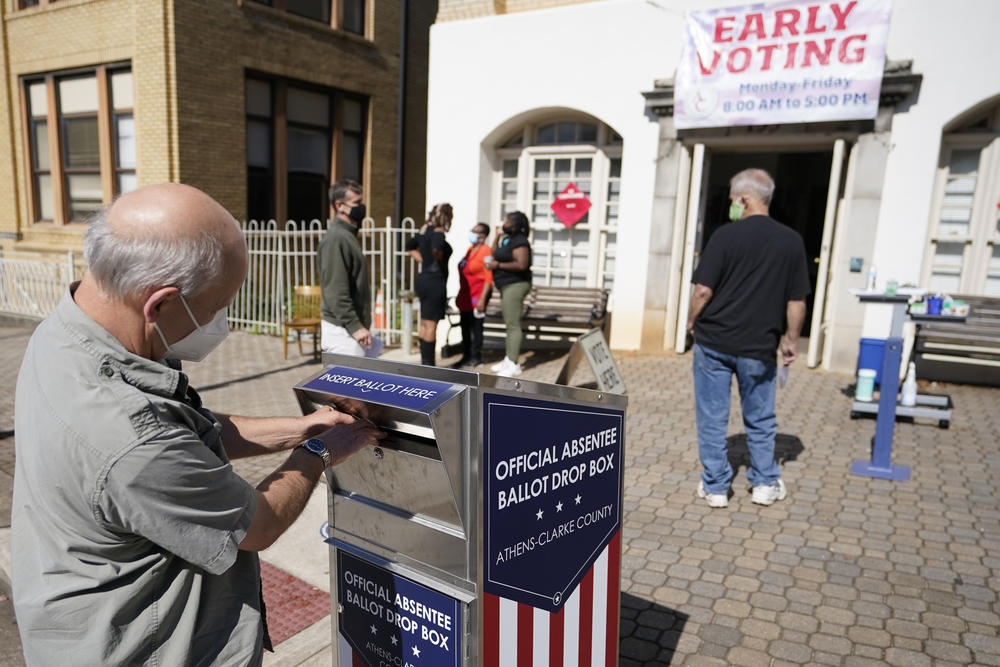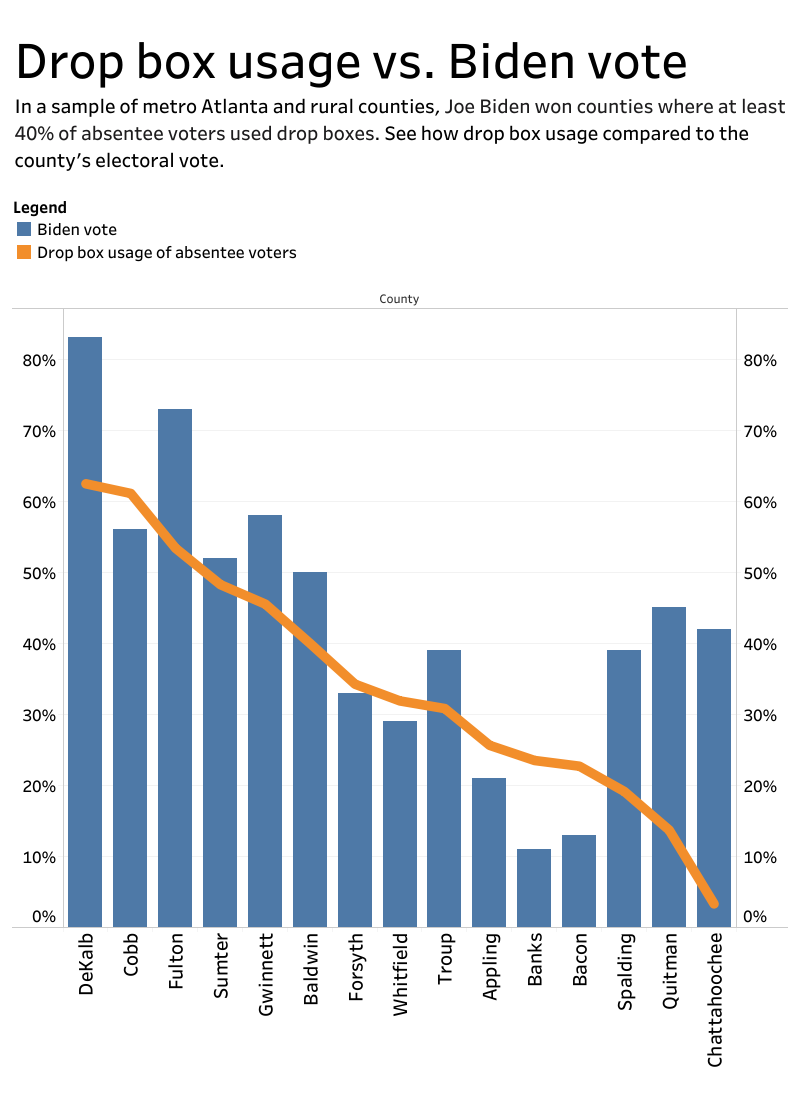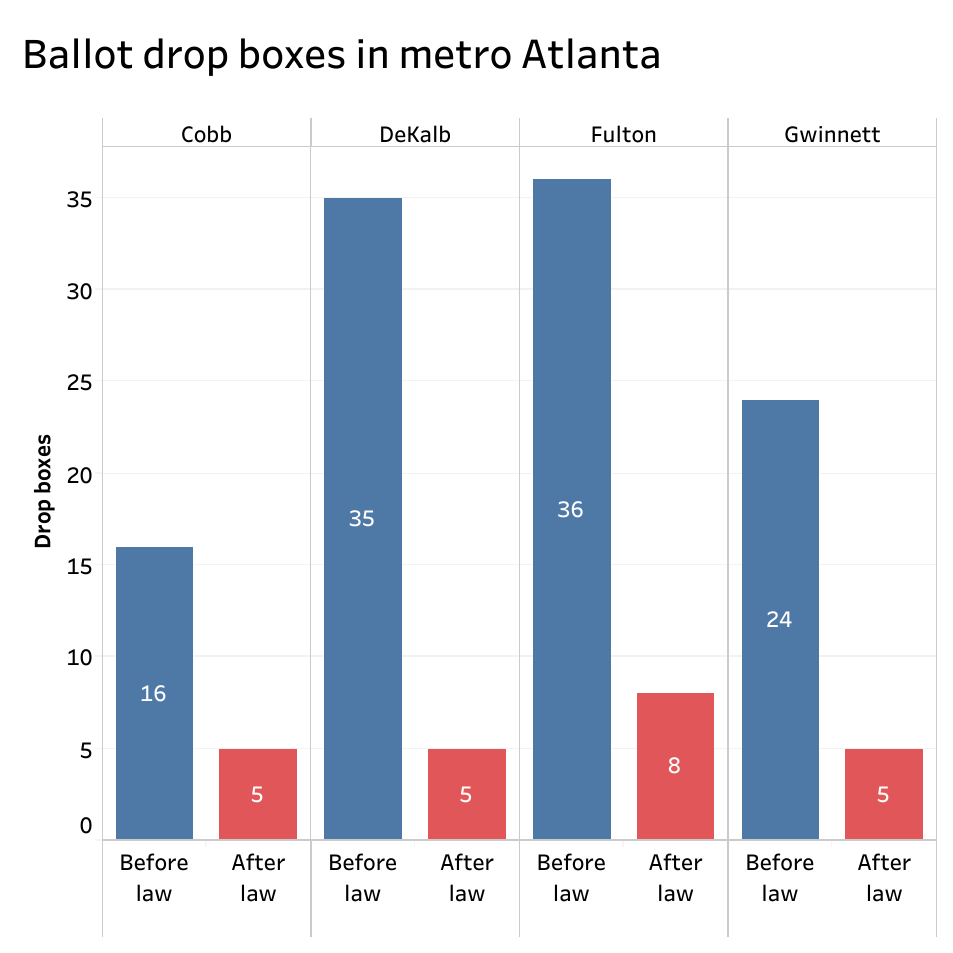
Caption
In this Monday, Oct. 19, 2020 file photo, a voter submits a ballot in an official drop box during early voting in Athens, Ga. Georgia’s secretary of state says, Tuesday, June 15, 2021, his office is reviewing the handling of paperwork related to ballot drop boxes in the state’s most populous county during last year’s election.
Credit: John Bazemore | AP




